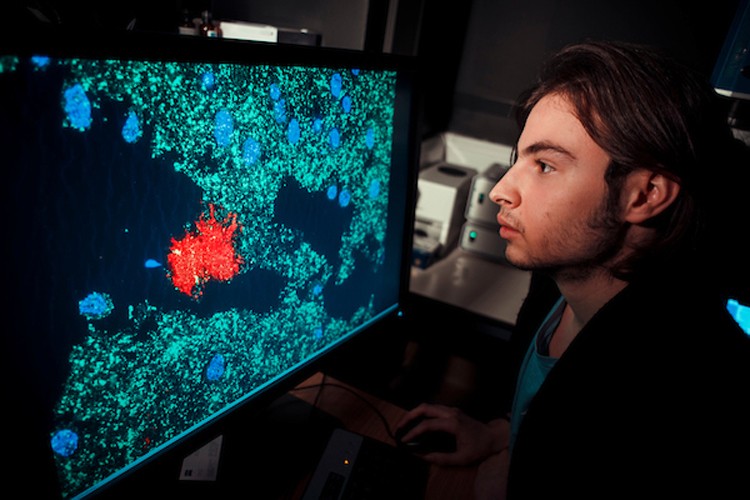New insights into how motor neurons live and die in MND

Dec 2017: Euan MacDonald Centre scientists have published new studies that provide insights into the molecules and chemical pathways involved in neuron degeneration.
Euan MacDonald Centre scientists have published new studies that provide insights into the molecules and chemical pathways involved in neuron degeneration.
The anatomy of human nerve – muscle connections
Professor Tom Gillingwater, with colleagues in Exeter and Dundee, has revealed fresh insights into the links between nerve and muscle cells, at connections called neuromuscular junctions (NMJ). NMJ allow electrical and chemical messages to flow from nerve to muscle cells, enabling motion. The team studied the anatomy of human NMJs using tissue gifted by donors undergoing leg surgery. They found that human NMJs were much smaller and frailer than those found in other mammals. The next steps will be to use these vital insights to understand how the NMJ breaks down in people with neuromuscular conditions such as motor neurone disease.
‘Protein factory’ machinery important in spinal muscular atrophy
Also from Professor Gillingwater’s lab is a new study in collaboration with colleagues from the University of Trento in Italy. The researchers have shown that a key protein involved in the childhood form of MND, spinal muscular atrophy (SMA), plays an important role in regulating the generation of new proteins in neurons, via a process known as translation. Experiments in a mouse model of SMA demonstrated that defects in protein translation are an important, but reversible, factor that can contribute to the breakdown and loss of motor neurons.
‘Killer proteins’ could be involved in motor neuron degeneration
Professor Richard Ribchester, working with a team at the John van Geest Centre for Brain Repair in Cambridge, has published findings that a protein called SARM1 may be a key regulator of motor neuron degeneration. When the SARM-1 protein was genetically suppressed in mice, there were dramatic beneficial effects (“rescue”) from a particular type of motor neuron degeneration caused by deficiencies in another protein, called Nmnat2. By identifying then blocking the effects of crucial proteins that trigger degeneration, like SARM1, researchers may be able to develop treatments that could ultimately benefit people with different types of motor neurone disease.
Identifying the protein regulators of neuron stability
Dr Tom Wishart and colleagues have published a study that yields insight into the vulnerability of motor neurons to degeneration – and specifically the observation that synapses – the nerve terminals that connect neurons with other neurons or with muscles – often degenerate first. With colleagues in the UK and USA, Dr Wishart and team investigated the levels of proteins in cells, in brain regions showing different amounts of neurodegeneration. Having identified particular proteins that might be involved in neurodegeneration – or protection from it – the researchers then tested their effects in fruit flies. This approach could be a powerful way to uncover the mechanisms by which different types of neurons live and die in MND.


